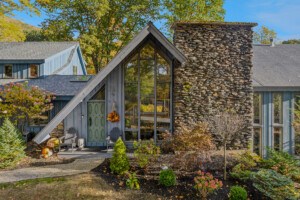Metal Music
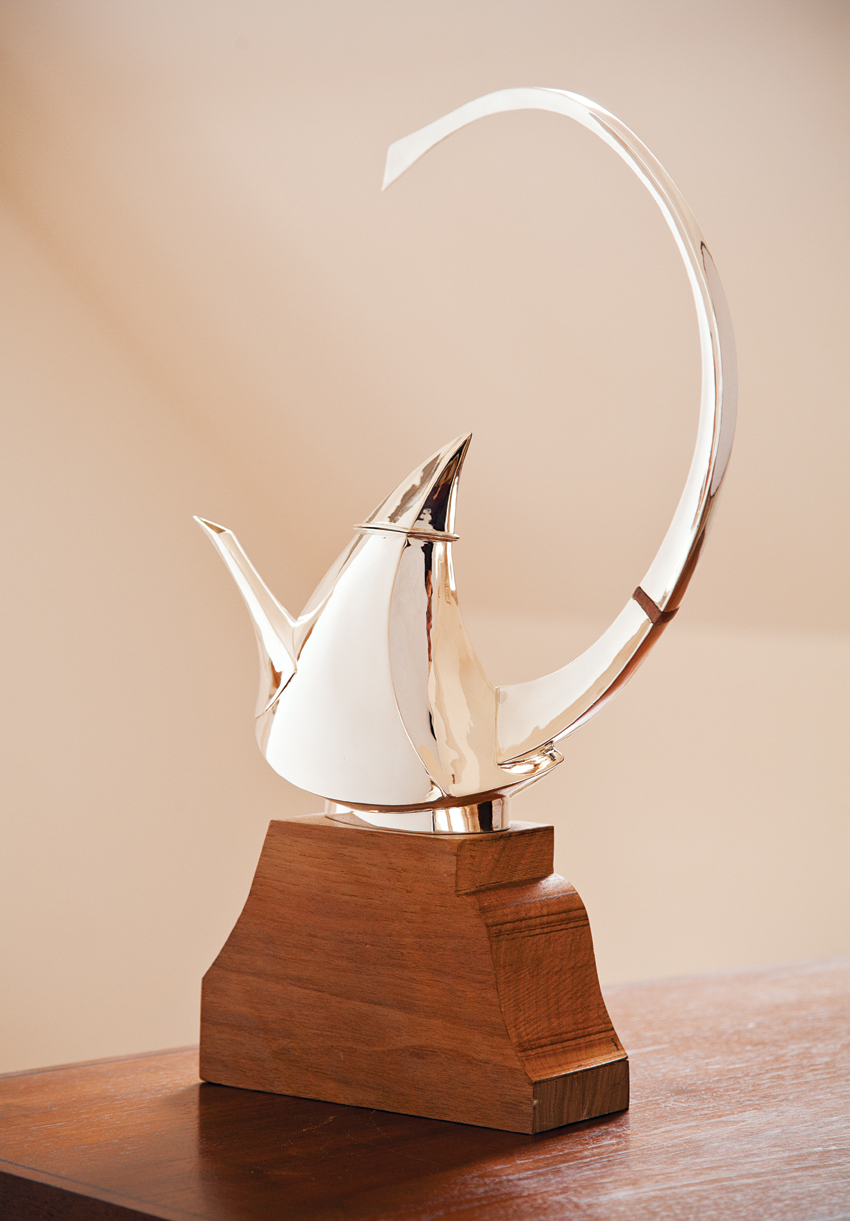
This elegant sterling silver teapot is known as the Big Wizard. (Photos by Pat Piasecki)
“I like to see silver move,” says Michael Banner in his Monterey, Massachusetts, studio. “Antique silver seems pretty static, yet silver is an amazing metal. You can craft a handle that comes to an elongated fine point. It’s that strong.”
Michael first learned to coax metal into stunning forms while taking a jewelry-making class at Western Michigan University in the late 1950s. Smitten with the craft, he later enrolled at the Cleveland Institute of Art, where he learned how to make hollowware and enamels. Within a few years, he met Maureen, an artist who would become his wife and lifelong collaborator. Since 1977, the Banners have lived and worked in the Berkshires, where they use their converted garage as a studio. Inside, Maureen focuses on jewelry and creates shimmering enamel collages for Michael’s teapot lids. Michael works primarily on tea and coffee sets, though he’ll occasionally craft candleholders and vases.
Michael’s contemporary teapots may be distant cousins of Paul Revere’s ornamental vessels, but they’re made using the same tools as the early American silversmith. “It’s a slow building process,” Michael says of the pieces, which run from $2,000 to $30,000. When a rough idea for a new teapot emerges, Michael creates a paper pattern using thick Bristol board. Next, he tapes together pieces of the pattern until the work starts to take shape. “Even though you can’t get the full body of a form using paper, you can figure out size and proportions,” he says.
After cutting the metal pieces according to his paper patterns, Michael makes them three-dimensional by gently hammering them over a stake—a T-shaped device held steady in a vise. Next, he bevels all the edges, which ensures airtight, virtually invisible seams once he fires up his heat torch and solders everything together.
While bringing each teapot to life, Michael and Maureen critique the design, focusing on both form and function. “I think if your piece is visually balanced, it’s almost always physically balanced,” he says. “If your eye says that the handle is off a couple degrees, it’s probably not going to feel right, either.”
Michael says that some critics have suggested that his work is rooted in the art nouveau. “But that’s not accurate,” he adds good-naturedly. Whereas art nouveau artisans interpreted nature quite literally—casting a twig shape with naturalistic detail, for example, Michael tends to look at nature in a more-abstract way, paring it down to unadorned forms. “Living in the country, there’s not a straight line anywhere. When I look out my window and see tall, swaying miscanthus grass, I see handles for a teapot!” he says.
These days, Michael and Maureen, retired from the high-end craft-show circuit, spend the bulk of their time doing the two things they love the most: making art and tending to their expansive garden. But that doesn’t mean they’re slowing down. Michael’s teapots can be found in many museums—including the Smithsonian American Art Museum and the MFA—as well as on display in homes across the country, where they will be preserved for decades to come. “If my clients don’t use my pots functionally, that’s fine,” he says. “But who knows, maybe the next generation, or the next, will put them to good use.”

Michael builds a model for a teapot base out of Bristol board.
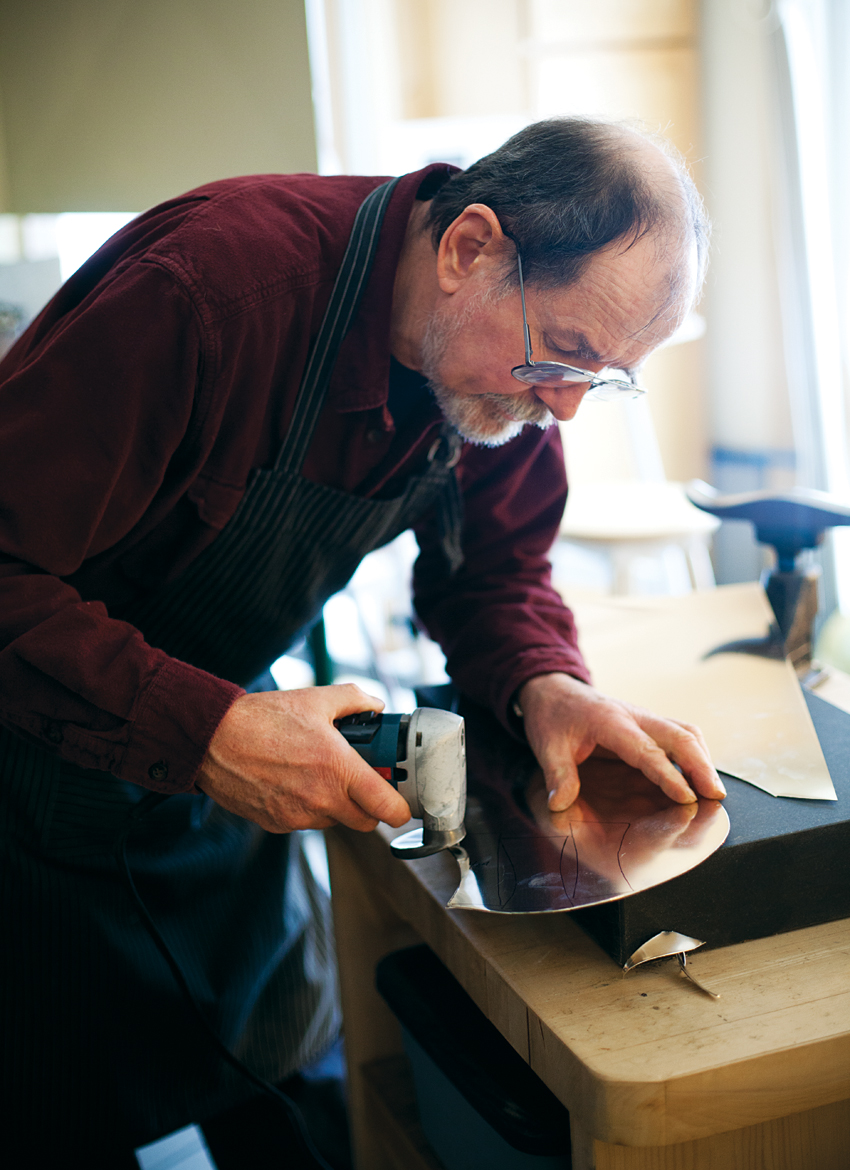
Flat silver sheets are cut into pattern pieces with an electric shearing tool.
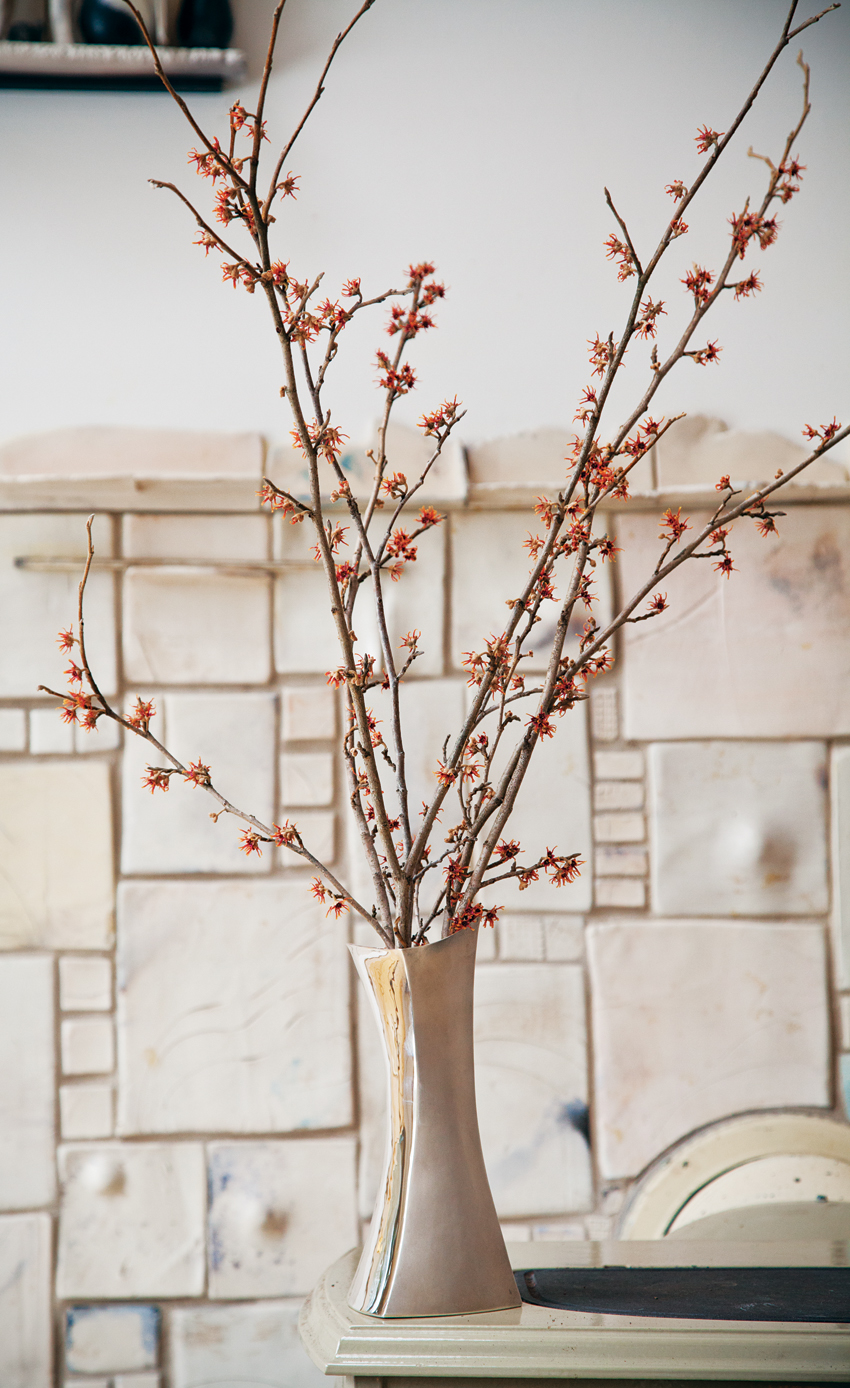
Witch-hazel branches sprout from a Banner creation.
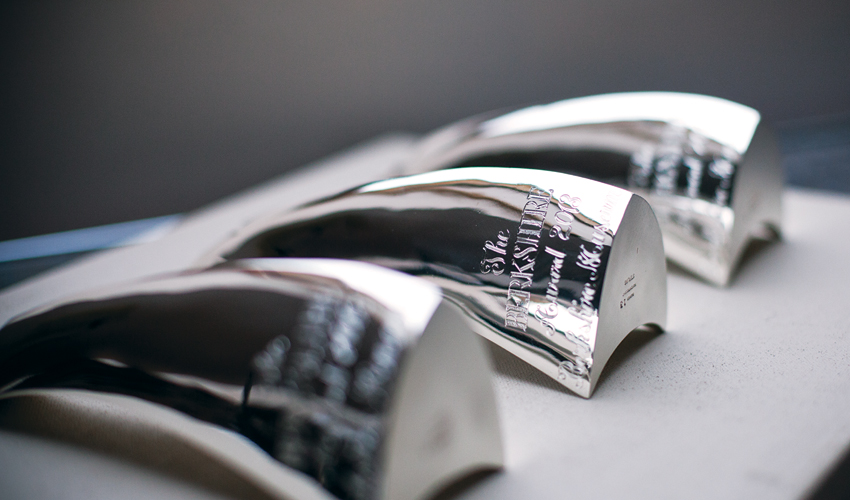
Engraved silver parts will be used to build the Banners’ signature vases.
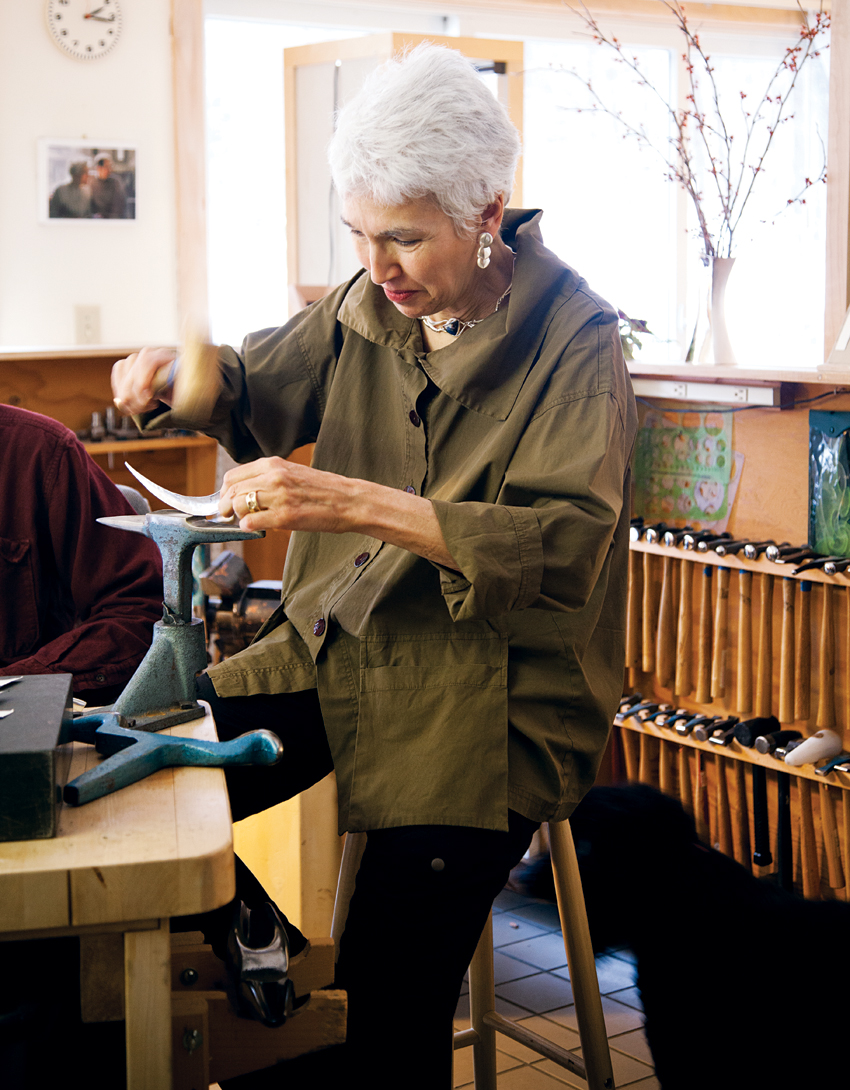
Maureen hammers silver into shape.
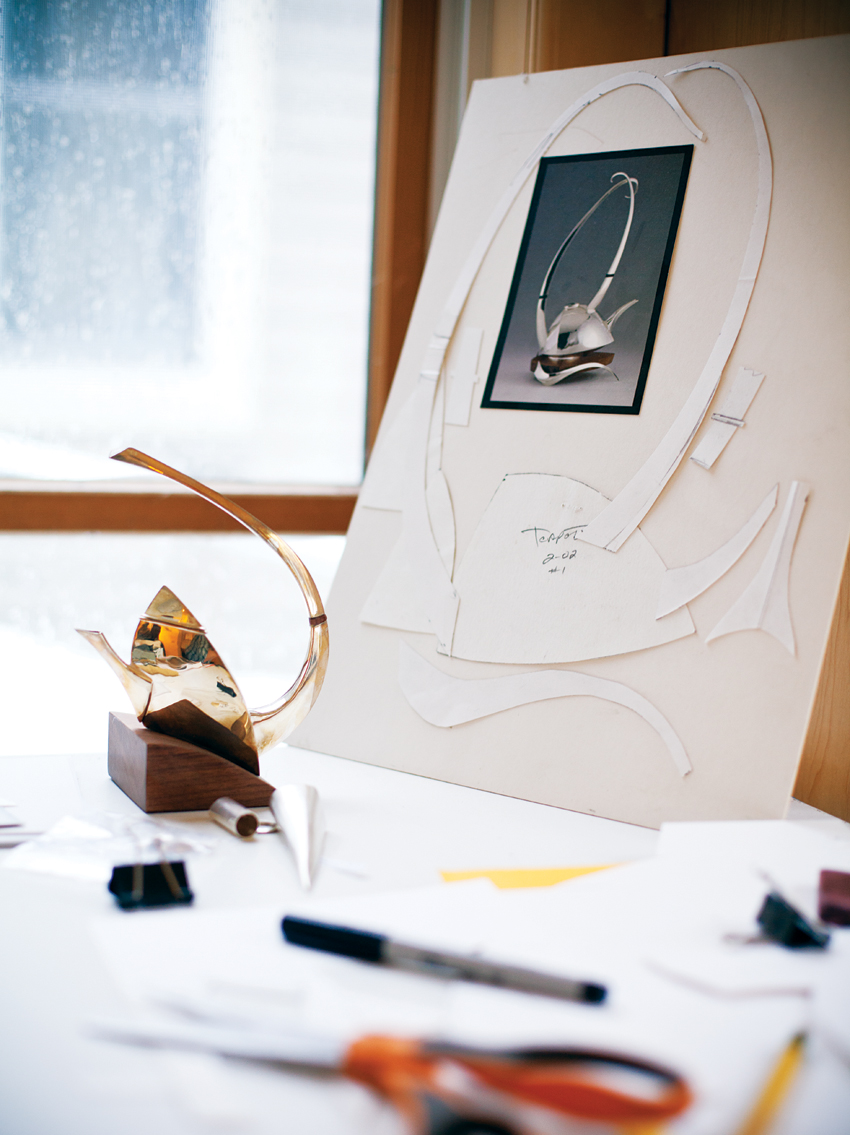
A teapot pattern on Bristol board sits next to the finished piece on Michael’s desk.
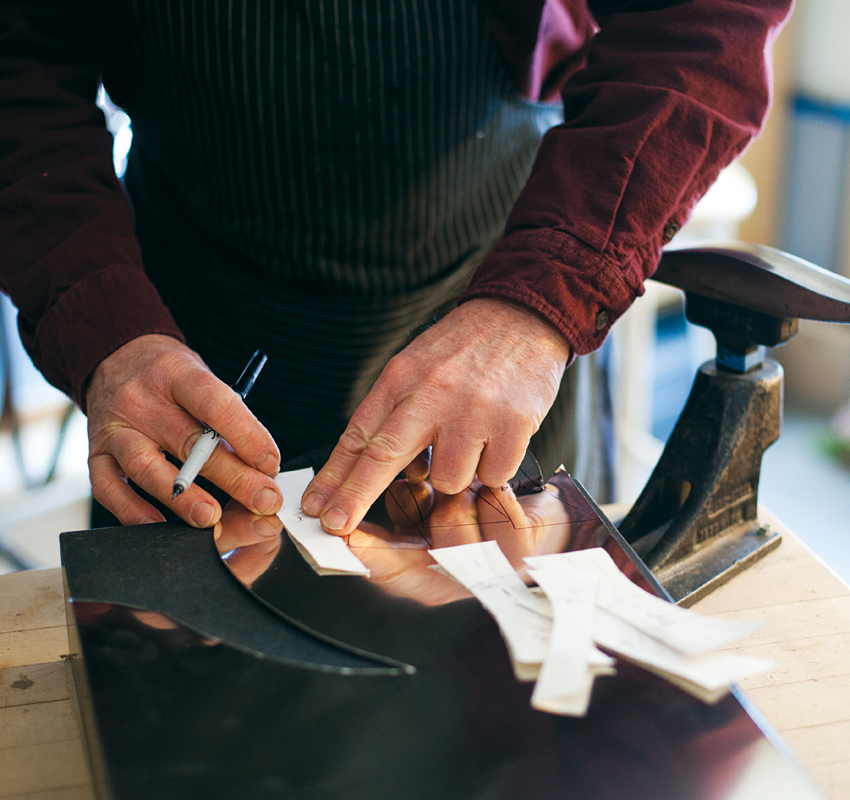
Using a Sharpie, Michael traces patterns directly onto the metal sheets.
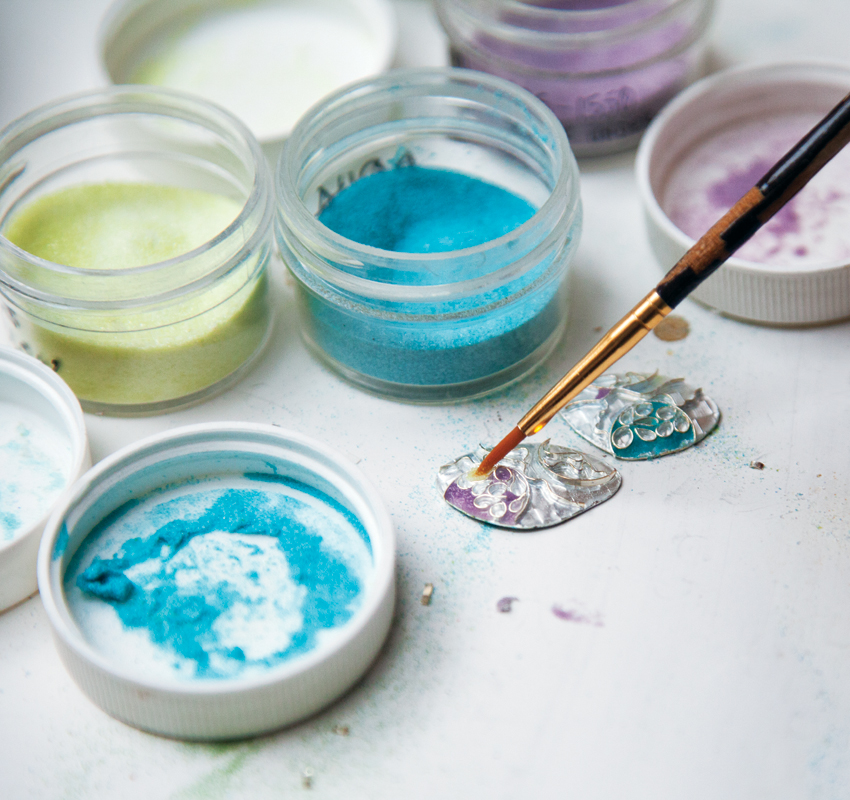
Maureen applies powdered enamel to the silver form before firing.

Tools of the trade include a vise, wooden hammers, and a sturdy workbench.
